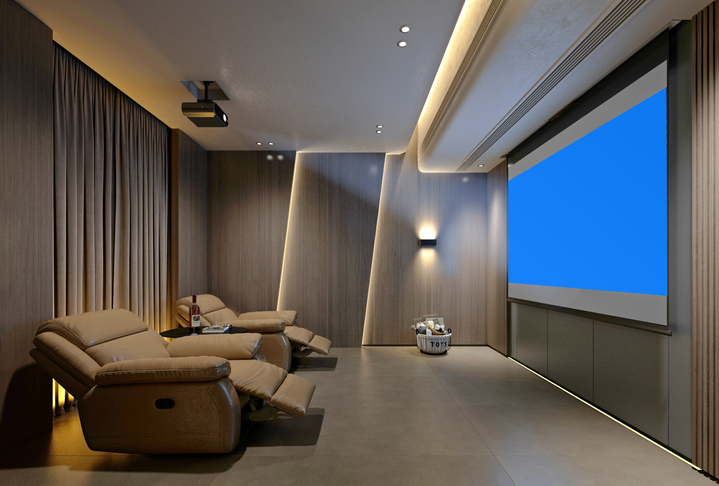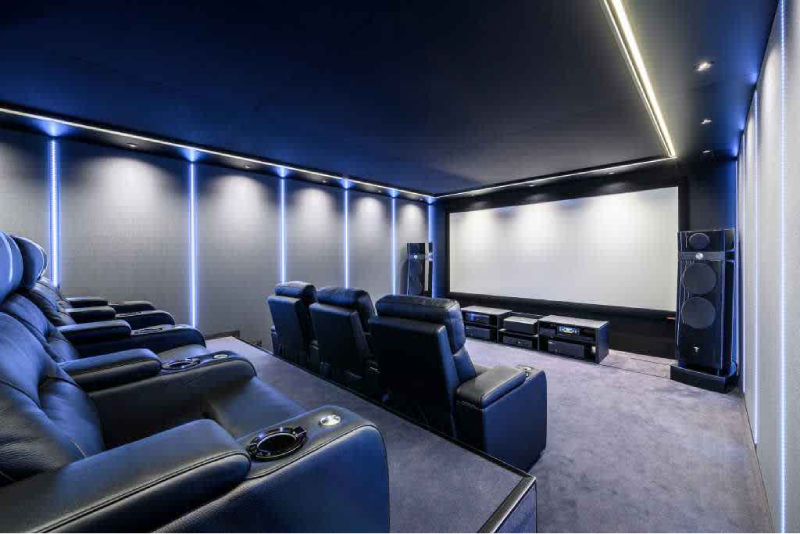Top Home Theater Tampa Installers Offering Customized Services
Wiki Article
Home Theater 101: Every Little Thing You Need to Know for a Motion Picture Experience in your home
Producing a home movie theater that measures up to the motion picture experience of a commercial theater entails mindful factor to consider of numerous elements, consisting of display selection, sound systems, and space format. Whether you are considering the suitable screen size or the complexities of surround sound, comprehending these principles is crucial.Picking the Right Screen
When establishing a home movie theater, picking the best display can make or break the watching experience - home theater installation tampa. The screen works as the centerpiece of your setup, affecting photo top quality, seeing angles, and total aesthetic. Trick aspects to take into consideration include display dimension, resolution, and kindInitially, figure out the appropriate display size based on your space dimensions and seating range. A general standard is to sit approximately 1.5 to 2.5 times the diagonal display dimension for optimal viewing. Next off, select between different display types, such as fixed-frame, motorized, or retracting displays, each offering distinct benefits. Fixed-frame screens generally give the very best image high quality, while mechanized choices enable for adaptability precede use.
Resolution is an additional important element. For a genuinely immersive experience, take into consideration a display developed for 4K or perhaps 8K content, guaranteeing sharpness and clearness. Additionally, think about the screen's gain, which impacts illumination and contrast; a greater gain can boost illumination in well-lit spaces, while a lower gain might be preferable for darker atmospheres.
Picking Sound Equipment
Audio devices is an essential part of any home movie theater system, substantially boosting the total watching experience. The choice of audio equipment can figure out the depth, clarity, and immersion of noise, critical for developing a motion picture ambience.When picking audio tools, think about a surround stereo, which typically consists of a receiver, several speakers, and a speaker. A 5.1 or 7.1 channel system is advised, where the initial number stands for the audio speakers and the second the subwoofer, offering an immersive soundscape. The receiver is the heart of the system, managing audio and video signals, and ought to support modern styles like Dolby Atmos for a boosted spatial experience.
Quality audio speakers are vital; try to find designs that use a well balanced sound profile with good bass feedback. Floor-standing audio speakers can generate richer noise, while bookshelf options conserve area. In addition, take into consideration wireless options for convenience of setup, although wired systems typically deliver exceptional performance.

Optimum Seating Arrangements
Creating an excellent home theater experience pivots substantially on ideal seating arrangements. The arrangement of seats plays a critical role in both convenience and watching high quality, directly influencing the total cinematic experience.First, take into consideration the display dimension and checking out range. A typical standard is to place seats at a distance around 1.5 to 2.5 times the angled size of the screen. This ensures an immersive experience without stressing the eyes.
Following, elevation is essential. If your browse around this site seating is in a tiered style, the back rows need to be greater than the front to stay clear of blockages. For level seating, ensure that the front row is not too close to the display, which everyone has a clear line of vision.
Additionally, think about the plan in terms of social characteristics. Team seats can enhance the communal experience, while private seats may be chosen for personal viewing.

Finally, prioritize convenience with ergonomic seats that sustains extensive viewing periods. Incorporating reclining chairs or supported seats can dramatically enhance the experience, making the home theater a preferred destination for both home entertainment and leisure.
Lighting and Setting
Effective lights and setting are vital components of a properly designed home cinema, as they significantly influence the seeing experience. The ideal lighting can enhance the motion picture feel, while inadequate options can take away from it. For optimum outcomes, think about a layered lights approach that includes ambient, job, and accent lighting.Ambient illumination gives basic lighting, making sure that the area is not completely dark, which can strain the eyes. Dimmer buttons are extremely suggested, enabling for adjustments based upon the content being watched. Job illumination, such as wall surface sconces useful link or floor lights, provides useful lighting for activities like analysis or browsing the room without interfering with the general environment.
Accent illumination can be used to highlight building attributes or produce centerpieces, including depth and passion to the area. LED strip lights behind screens look at these guys or along racks can provide a subtle glow that enhances the aesthetic experience without overwhelming the visitor.

Wiring and Installation Tips
A well-planned wiring configuration is important for achieving ideal performance in your house cinema system. Appropriate electrical wiring not only makes sure high-grade sound and video signals yet likewise improves the total aesthetic of your room. Begin by drawing up your design, identifying where each component will certainly be placed, including your display, audio speakers, and receiver.When selecting cable televisions, prioritize premium, appropriately assessed electrical wiring to decrease signal loss. HDMI cords must be utilized for video links, while speaker wire need to match the specs of your audio speakers and amplifier. Go with in-wall rated cords to comply with safety criteria and keep a tidy appearance.

Conclusion
In recap, producing a phenomenal home movie theater experience calls for mindful consideration of various elements, consisting of screen choice, audio tools, seating setups, illumination, and electrical wiring. By focusing on these aspects, a cinematic ambience can be efficiently replicated, allowing for immersive watching experiences that measure up to standard theater setups.Producing a home cinema that matches the cinematic experience of a commercial theatre includes mindful factor to consider of multiple components, consisting of screen option, audio systems, and space format.When setting up a home movie theater, picking the best screen can make or break the seeing experience. Next, select in between various screen types, such as fixed-frame, motorized, or retractable displays, each offering distinct advantages. For an absolutely immersive experience, think about a screen made for 4K or even 8K web content, making sure intensity and clearness.In recap, developing an outstanding home cinema experience needs cautious consideration of various elements, consisting of screen selection, audio equipment, seating setups, lighting, and wiring.
Report this wiki page